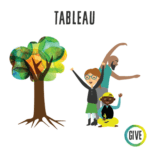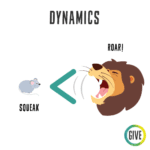파트너 또는 소그룹 찾기
제공자 로라 보그와트
![]()
![]()
![]()
![]()
설명
This transition or skill-building activity provides strategies and techniques to create pairs/small groups in intentional and fun ways that build classroom community.
지도
There are lots of different options for helping your students find a partner or small group to work with. Here are some different options for predetermined pairs/groups and random pairs/groups.
*Also see 그룹 구성: 장단점 및 전략 그리고 원을 형성하다
Pre-determined pairs/groups
- Stickers: Give each student a name tag with a sticker or colored dot on it. Have students find others with the same sticker/colored dot. Visit the resources on sticker labels 그리고 stamps and stickers.
- Scarves: Give each student a colored scarf. Have students dance around the room with their scarves, and find others with the same color. (If you want random groups, have students find one of each color.)
- Animals: Assign an animal to each student, and have them find others with the same animal. Students can only make the sounds that their animal makes and act out their animals physically. Pick animals with very different physical features and movements/mannerisms. Provide pictures of the animals. Practice 역학 first and have everyone make their animal sounds at their desks, the circle, or if there is one available, at the piano (otherwise it might get too loud in the room).

Additional Variations for Groups That Are Ready for a Challenge
- You can’t make any noise.
- Tricky animals: Use some animals that are similar (e.g., monkey and gorilla) so the actors have to be more specific with their acting choices.
- Puzzle pieces: For group work, have simple images cut into four (or however large you want the groups to be) puzzle pieces (laminated). Pass out the pieces and either have each puzzle printed on a different color paper (easy), or use the same color paper for the whole puzzle (harder).
Random pairs
- Moving around the room: Stop for various tasks with the person closest to you. Shake hands, wink, nod, or wave at one person. Every time you pass this person, you wink. Now find your wink partner. They will be your partner for this next activity
- 사람들을 무작위로 짝지어주는 웹사이트나 앱을 사용하세요.
- 줄을 서서(키, 생일 등으로) 계산합니다.
- Circle partner speed-friending.
- Count off: Have students put their numbers up on their fingers so they don’t forget right away.
- Classroom Teachers also have great ways of finding partners/groups. They might have reading groups and other systems for picking partners. (For example, a Teacher might use a cell phone with different numbers on speed dial and ask students to find their speed dial number 4 partner today, etc.).
활동에서 전환
When you’ve found your partner(s), sit on the floor facing each other and find out their favorite breakfast food(s). Or make a silent tableau to show that you’ve found your group etc.

교실 배치
짝이나 소그룹으로 방을 돌아다닌다.
지지대/적응 재료/도구
수업 전문가를 위한 가능한 역할
- Support you in deciding predetermined groups.
원격 교육을 위한 조정
![]()
소그룹 방을 설정할 수 있도록 미리 그룹을 결정하십시오(교실 교사와 협력하여 학생을 가장 잘 지원할 수 있는 그룹/페어링을 결정).

